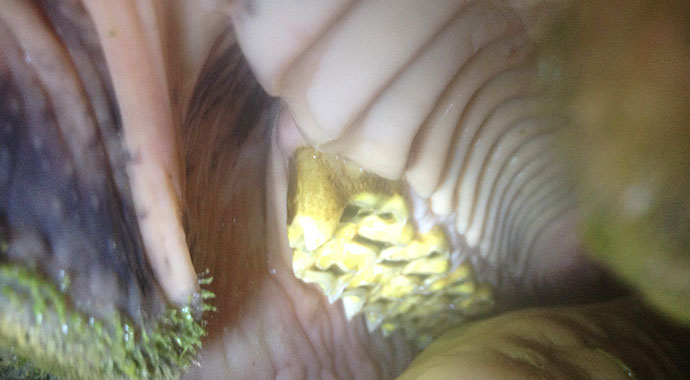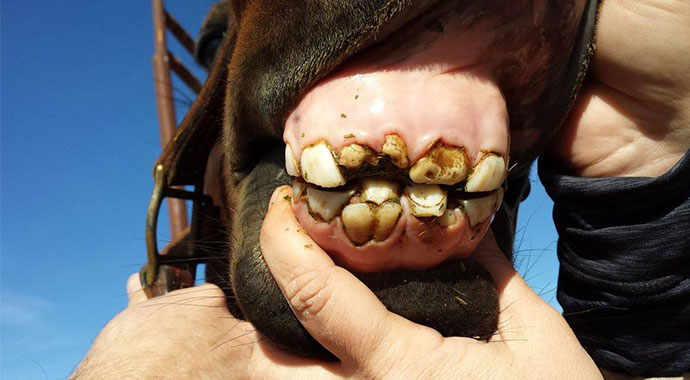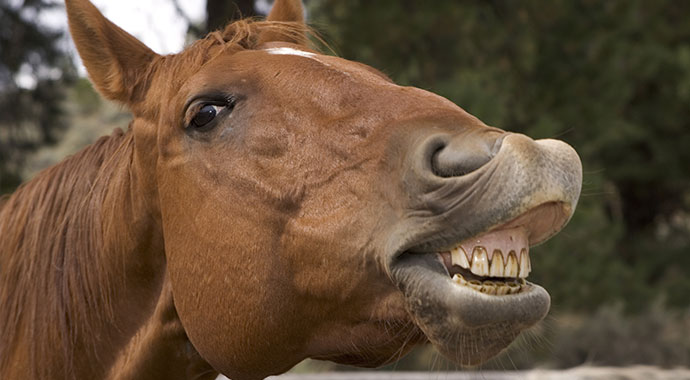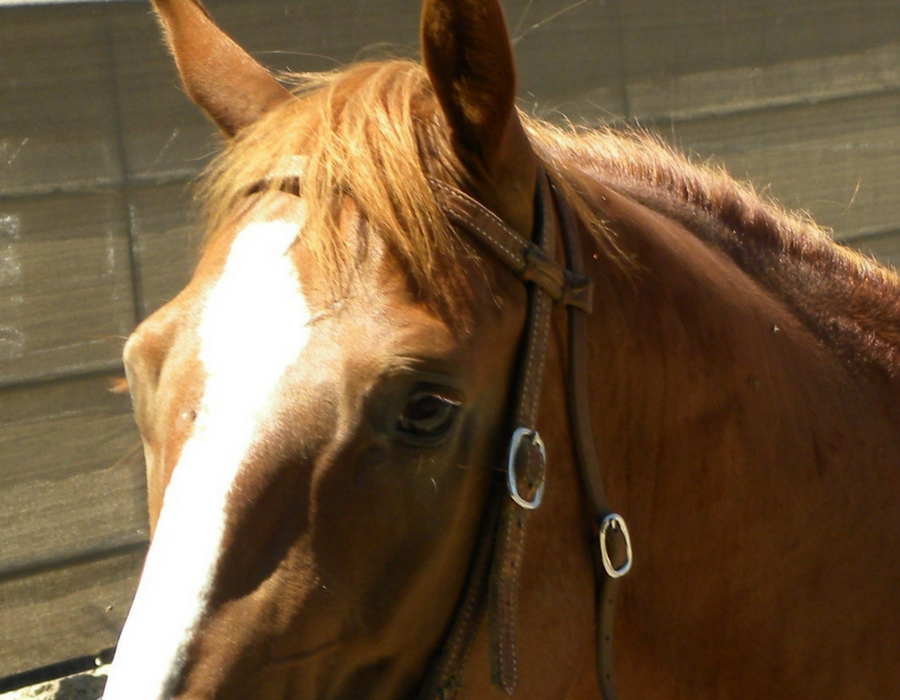The health of your horse’s teeth is one of the key aspects in keeping your horse healthy. Although, sometimes easily forgotten about, regular dental exams are an important part of your horse’s health care needs. Why are they so important? Regular dental care helps your horse maintain a healthy weight, prevent colic episodes by allowing them to properly chew their food, and effects their willingness to work and accept a bit.
Most horses require a dental float every 1-2 years. With that being said, there are some horses that require more regular dental examination and floating. Floating consists of reducing the sharp points that develop on the cheek side of the upper teeth and the tongue side on the lower jaw. Horses chew in a side to side motion which leads to development of sharp points in these areas. These points in turn, can cause oral abrasions and ulcers that can ultimately lead to pain, difficulty eating and discomfort during work. Additionally, if there are any occlusion problems, ramps or hooks may develop on the first and last teeth which decreases the horse’s range of motion causing them to have to exert more work to chew, and decrease their ability to completely chew their food.
What is a veterinarian looking for during a dental examination?
- Musculature – noting symmetry of the muscles on your horse’s face and looking for any signs of difference from left to right.
- Occlusion: How both the upper and lower incisors align. A horse may have an upper bite or lower bite that causes one set to be too far forward than the other. Additionally, wear patterns causing some incisors to be longer or shorter than others which may limit the horse’s ability to move its mouth from side to side to chew.
- Soft tissue structures – Evaluating for any irritation, swelling, or injury to the gums, cheek or tongue and investigating the cause of those problems.

- Sharp points: Sharp edges along the cheek or tongue side of the premolar/molars. Depending on severity these can cause erosions or ulcers in the horse’s mouth.
- Hooks or ramps – these can be quite large in horses and develop on the second premolar of the maxilla (upper jaw – hooks) or the last molar on the lower jaw (ramps). These need to be reduced as they inhibit the full range of motion.
- Diastemas – these are gaps in between teeth which allow feed material to get packed between.
- Dental decay – just like us, horses can essentially get “cavities” that need to be addressed before they cause other problems.

- Damaged teeth – fractured teeth happen quite frequently in horses and are most often discovered during routine dental exams. On certain occasions they may lead to a secondary problem called sinusitis. This occurs in the horse since the last couple molars on the upper jaw connect with the horse’s sinus. Additionally, noting any missing, or previously removed teeth along with any extra teeth that may be present.
In the next section, we’ll talk about some of the common specific dental problems, along with some newer ones that are just coming to the forefront.




